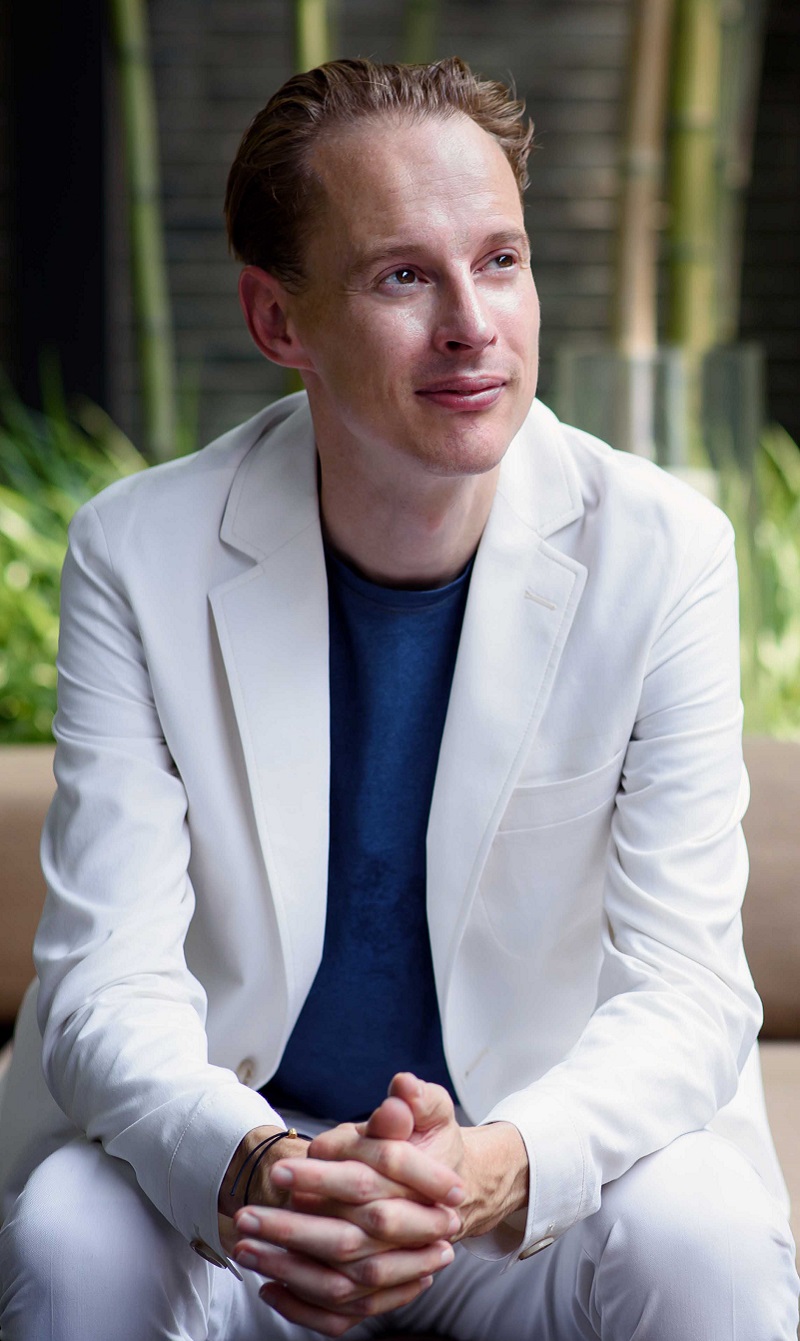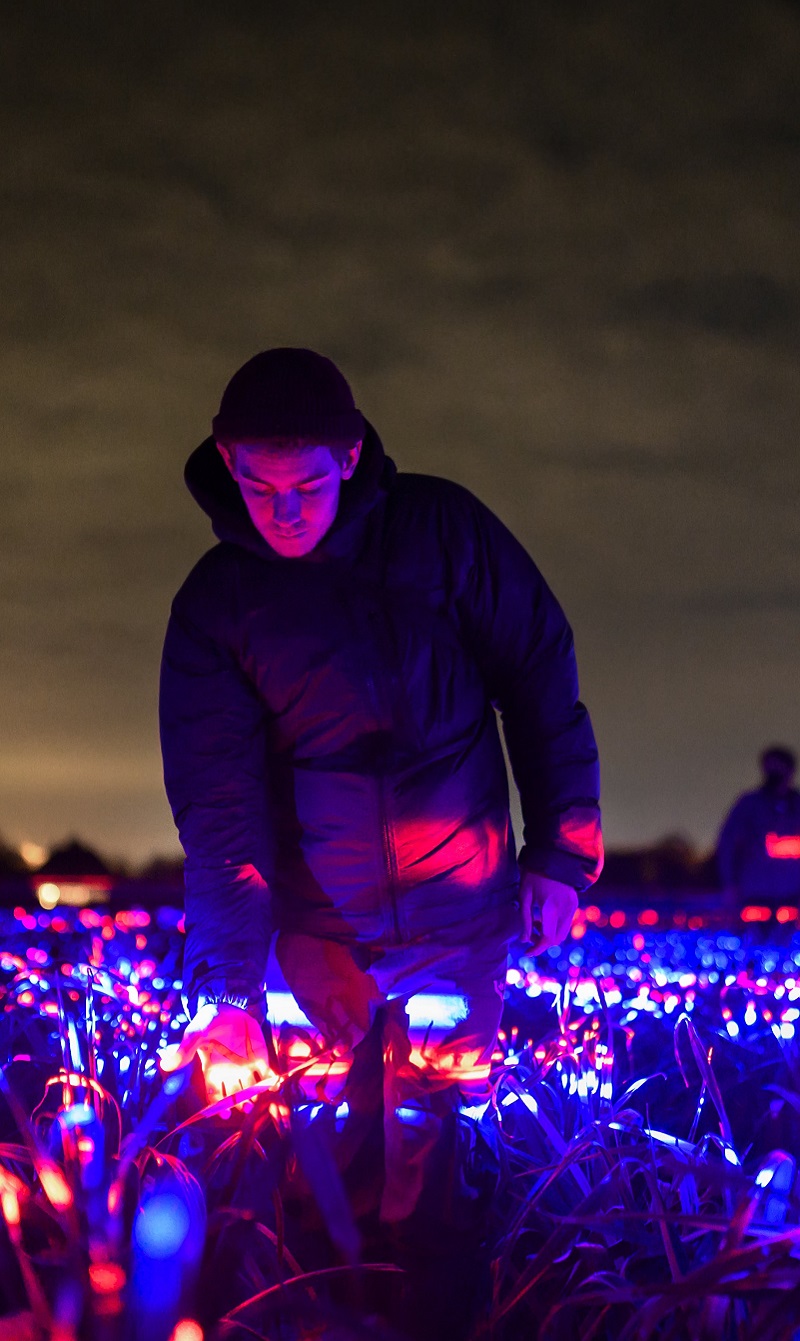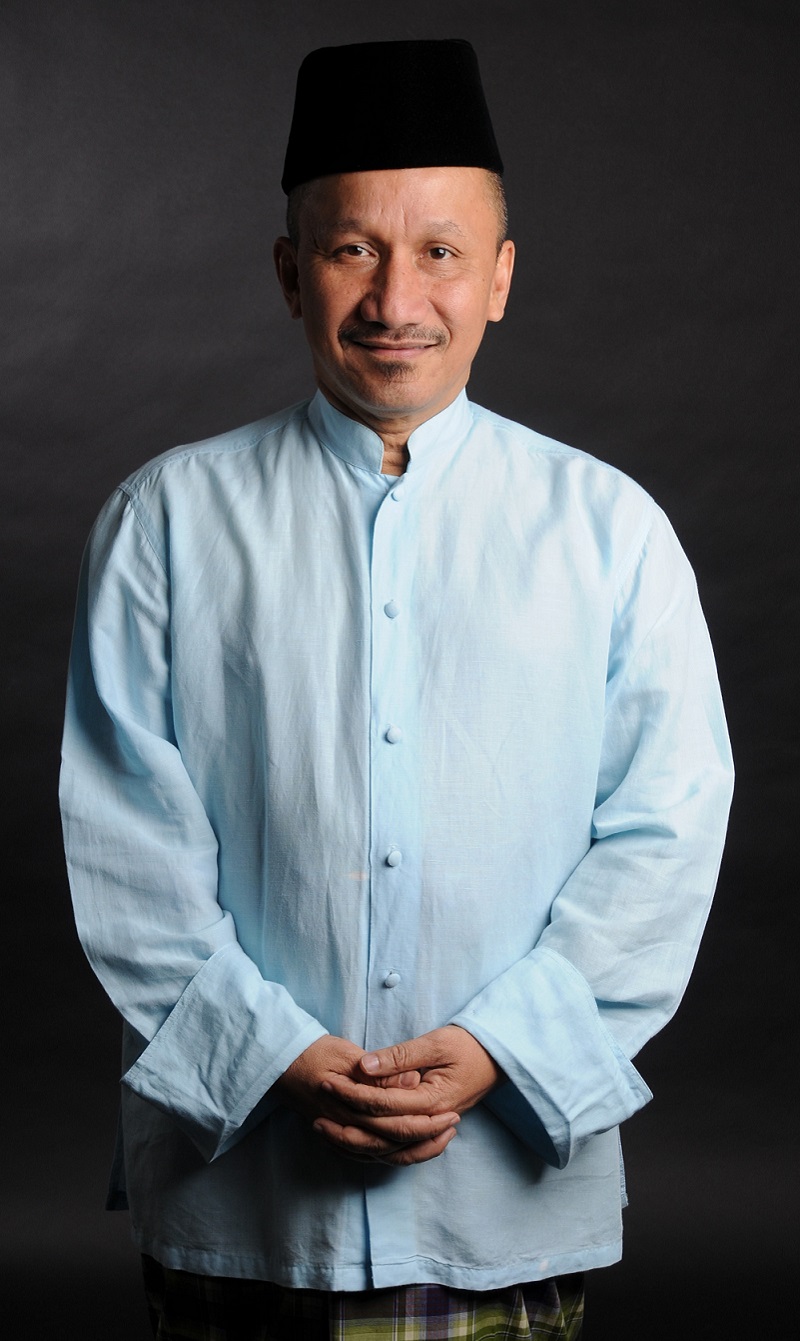Bringing Water to the Desert
Technology may be the only way to secure the future of water. Founder of SunGlacier explains his artistic fusion with technology that finds solutions for climate change. Samar Al-Montser reports in the third issue of In Focus magazine.
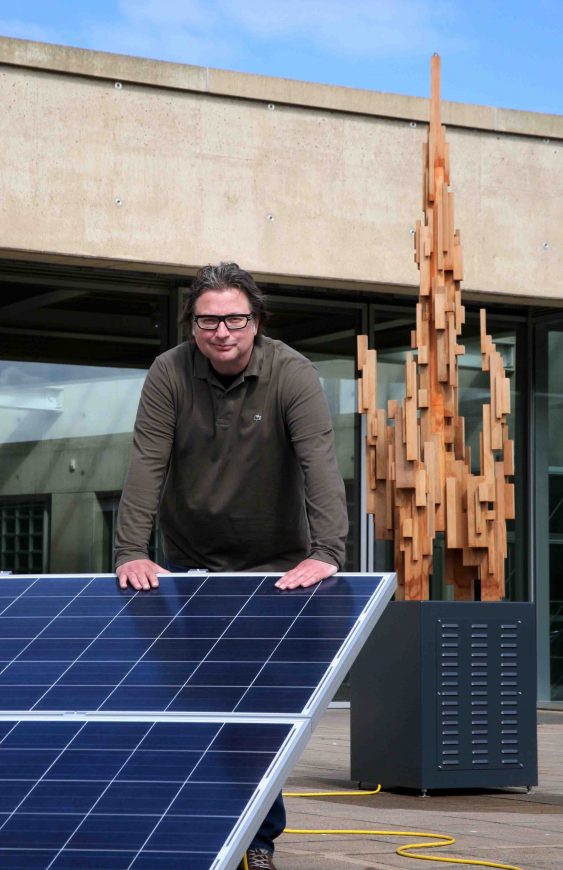
Water supply shortages are no longer problems restricted to underdeveloped countries. Climate change has been an ever-growing concern over recent decades, especially for 54-year-old Dutch artist and founder of SunGlacier, Ap Verheggen. Based in the Netherlands, Ap seeks to address issues of climate change by mixing art and technology in his inventions and sculptures. He’s attempting to decentralise the production of water from the air in hot climates to help solve climate change issues.
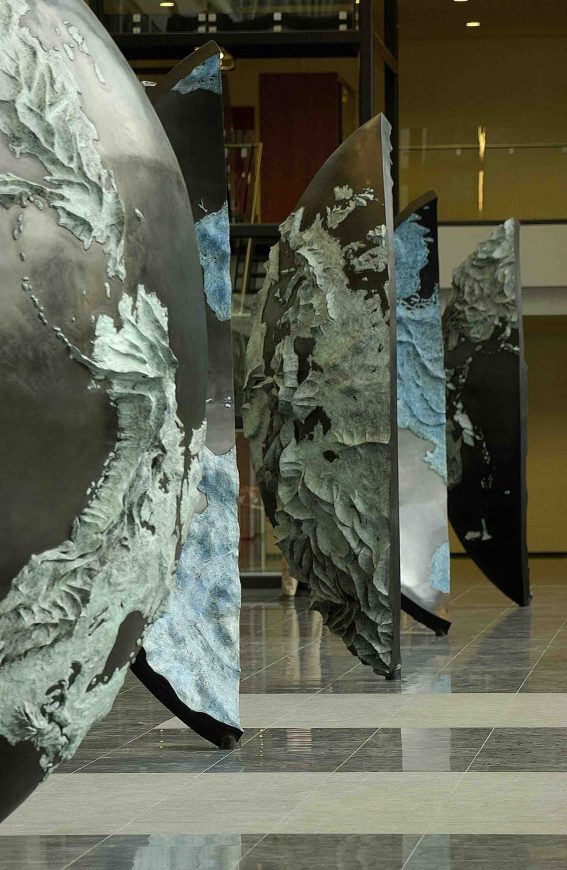
Before his SunGlacier project, as a sculptor and designer, Ap made huge art installations and built one of Europe’s largest bronze sculptures for Shell. The Terra Incognita, located at the Shell EPiCentre in Rijswijk, the Netherlands, stands as seven bronze sculptures of 3.60 metres high, each representing a continent. He believes that his passion for his art work gives him an open mind to help generate new ideas.
His awareness of the need to solve climate change issues began from a journey he took through the Arctic in the early 90’s. What he witnessed made him realise that climate change was happening very rapidly. ‘Midwinter it could suddenly start to rain, while midsummer we once got stuck in the sea-ice,’ he recalls. Since then, Ap has been inventing ways to utilise the sun’s energy to produce water.
Beginnings of SunGlacier
In 2010, he started the SunGlacier project, after creating two huge steel sculptures equipped with a GPS system that he set out to place on a drifting iceberg in the North of Greenland. He wanted to raise awareness and allow everybody to follow the voyage of the sculptures. ‘People got to see the impact of Arctic climate change in a new way and actually witnessed it,’ he says. Due to this, Ap was appointed as UNESCO- IHE cultural ambassador, which is the water education centre for the United Nations.
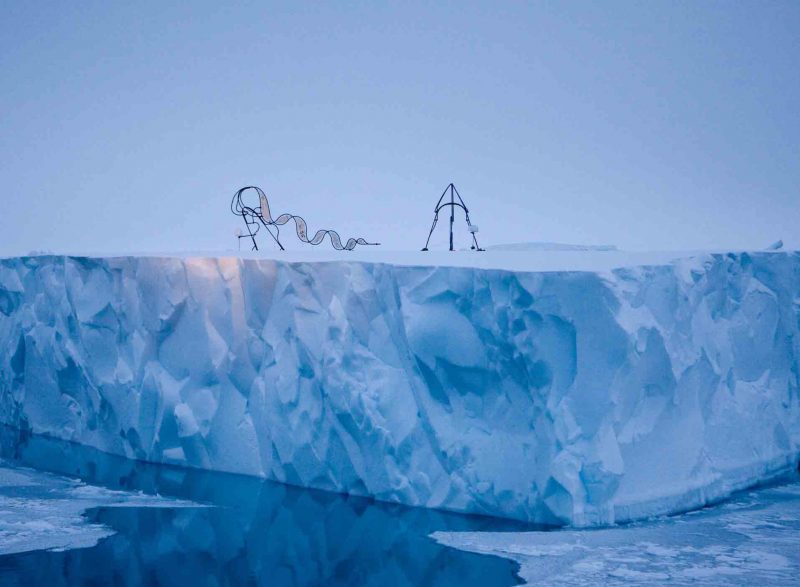
At the time, people were just beginning to realise the impact of climate change. Scientists calculated that an iceberg with that size would drift for at least two years, but because of the exceptionally high temperatures, which was over 20 degrees Celsius instead of the average -20 degrees Celsius, the iceberg exploded after a journey of only two months.
Ap then decided to experiment with solutions focused on helping those suffering from water shortages in hot climates. His first real SunGlacier installation was built in 2016 for an exhibition at the Beelden aan Zee museum, Scheveningen, The Netherlands. ‘I designed a large fountain from wood that collected in its base the harvested water from the air. The installation was powered by the energy of two solar panels. When the water reservoir was filled with water, it was pumped with a huge force out of the top of the sculpture,’ he says.
Water for Hot Climates
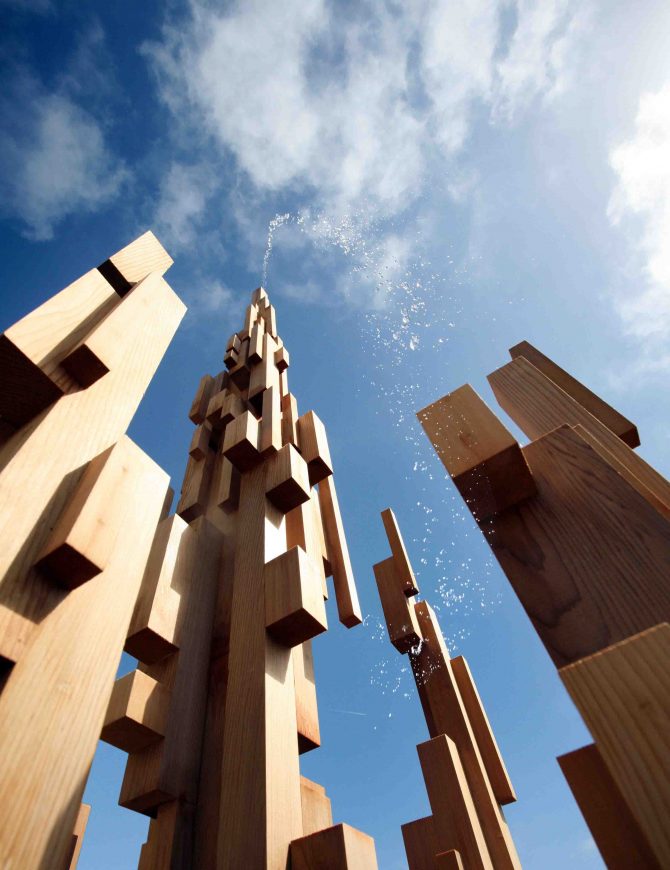
‘Many machines together can harvest a lot of water from the air. A lot of buckets a day means a filled water tank in a week,’ he says. This has been successful, especially in Mali, the hottest and driest place on earth. That’s where the Dutch ministry sent Ap and his team to test their idea in 2017. Using only solar energy, it was probably the world’s first artificial water well to work entirely off the grid. Since 2014, Ap and his team have built over 50 different prototypes of the SunGlacier technology that harvest water from air in different climates. They’ve also experimented with this water from air technology in Dubai and Oman. ‘It may sound weird but even in the world’s driest deserts, there’s water in the air,’ he says.
It’s Sustainable too
While many water sources produce water from a well which dries up lands, SunGlacier doesn’t. ‘The water that we produce isn’t pulled out of the system. Pumping water out of a well, for example, is gone forever. In the long term, empty means empty. We prefer off-grid water production. So, for reasons of water transport we certainly help reduce climate change,’ he assures. Through his experiments, Ap has learned that conventional technology stops running efficiently when temperatures rise to 35 degree Celsius. ‘That’s why we invented a complete and new technology that even runs when temperatures hit 50 degree Celsius, in a cork-dry climate. Our limitation is below three per cent relative humidity,’ he explains.
Quality Water and Efficiency

His latest machine, TM01, harvests water in a 24-hour cycle with solar energy. ‘We don’t produce any gasses,’ he says. It uses all free natural elements such as air, sunshine and gravity. With the condensation method, he created the world’s most efficient water producing way so water doesn’t evaporate in the process. ‘This new innovative technology is patent-pending and is expected to spread within a couple of years,’ he says. The water quality may sound comparable but according to Ap, it’s cleaner than the rain that drops thousands of metres from the sky. ‘We’re now able to harvest buckets of water in a much wider climate range. It’s always spectacular to see the amount of water growing,’ he says.
Environmental Impact and Future Inventions
‘The water that we produce will mainly be used for drinking water or for agriculture. The water cycles for a human are very short and plants evaporate 90 per cent of their water. So, in that sense, the water we produce is borrowed for a short term from nature,’ he explains. For Ap, he wants to satisfy his futuristic ideas of growing crops in places where nobody can live.
SunGlacier is now searching for companies that are interested in optimising the SunGlacier technology like Ap’s DC03 to produce water from air. ‘It’s now time to take the next steps in realising our initial goal: cheap drinking water for everybody, everywhere,’ he ends.
___________________
For more on the latest topics related to business, technology, finance and more, read our digital versions of In Focus magazine, issue 1, issue 2 and issue 3.
Photo of SunGlacier in Mali by Hessel Waalewijn


